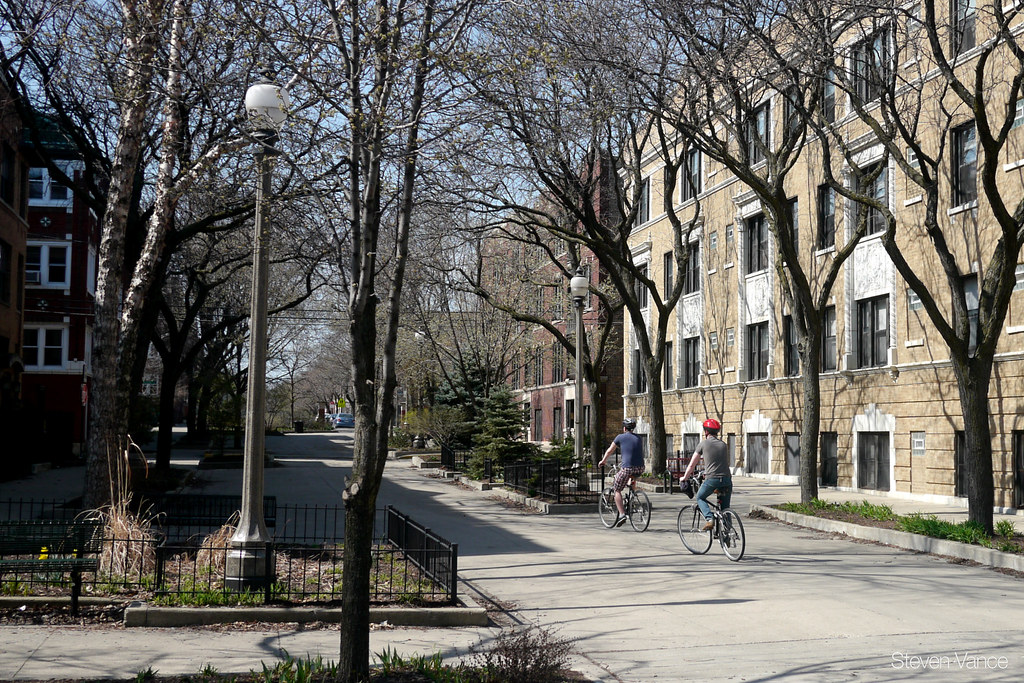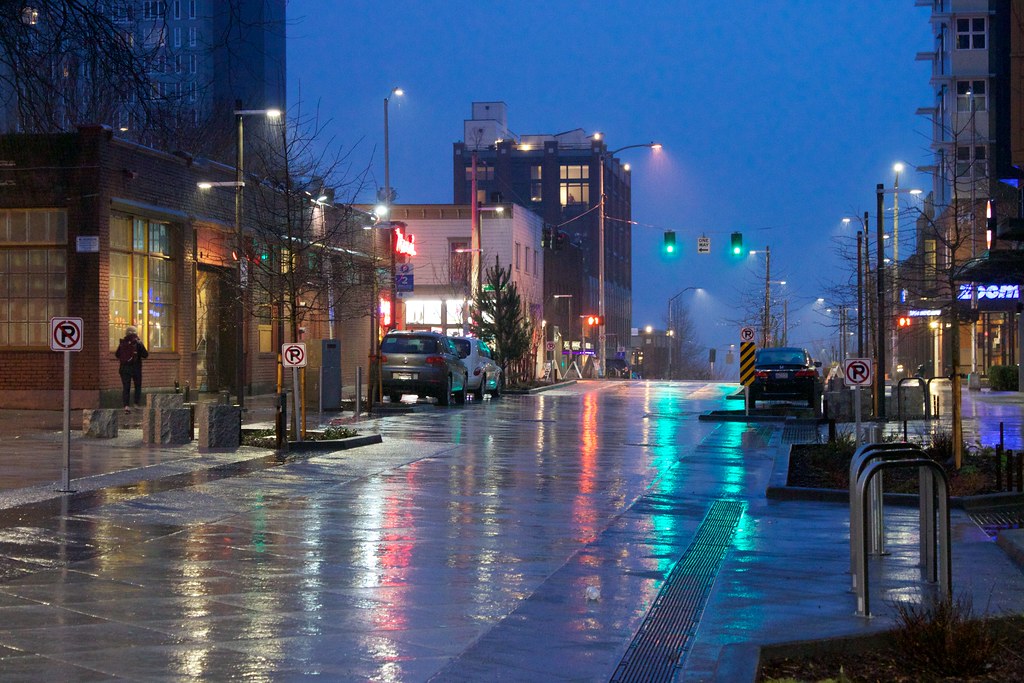In some places they’re called complete streets, home zones or shared spaces. However, I preferred the original Dutch term “woonerf” (pronounced VONE-erf). It described a concept as old as urban civilization itself although applied within a new context. It follows a very simple idea, a notion of streets shared by everyone. That concept took a beating for most of the 20th Century after the rise and supremacy of motorized vehicles. However, a few cities attempted to ratchet-back some of that automobile favoritism in recent years through creative street designs.
Characteristics

This image of a woonerf located somewhere in Sweden demonstrated several typical design characteristics. Here, nothing separated distinct walkways, roadways or cycle tracks. So every traveler regardless of method received the same consideration.
In theory this forced everyone to pay closer attention to everything happening around them, especially those driving automobiles who would also have to slow to walking speed to avoid pedestrians, bicyclists, children at play, babies in carriages, dogs on leashes, parked cars, landscaping and myriad other obstacles. It seemed to work in the Netherlands. Then it spread to other areas of Europe, and to select urban locations in Japan, Israel and increasingly to North America.
Niek de Boer, a professor of urban planning, coined the wonderful phrase, woonerf. It translated in this context to something akin to “living yard” according to several sources. The Oxford Dictionary provided an etymology, “from wonen ‘reside’ + erf ‘premises, ground’.” Thus it sprang from a philosophy that all land between rows of shops or homes should be everyone’s yard, a single public space.
Dutch Wikipedia placed the first modern woonerf in the Emmerhout neighborhood of Emmen (map). An article in the Journal of the American Planning Association “Changing the Residential Street Scene” (1995) traced the initial implementation to Delft. I think there might be confusion because Niek de Boer was a professor in both cities. Or perhaps because I don’t read Dutch and translation software wasn’t all that great. Either way, woonerfs began somewhere in the Netherlands circa 1969.
The concept began to creep into North America only recently. I found a few examples.
Chicago, Illinois, USA

While the photo caption proclaimed “Chicago’s Only Woonerf” for a two-block segment of Sunnyside Avenue (map), that won’t be the case for long. Others were already in the works. A much more ambitious effort, the Argyle Streetscape Project (map) was slated for construction in the Spring of 2015. Another instance recently appeared in the suburb of Batavia. It was so new that a Google Street View photo from 2012 showed it still under construction (image).
Montréal, Québec, Canada
Woonerf Saint-Pierre became Montréal first woonerf in September 2013: “Today, the woonerf Saint-Pierre is 7000 square meters of greenery, a hundred trees, shrubs and 1,800 square meters of stabilized stone dust!“
Prior to that it was mostly an eyesore.
“The alleyway in Saint-Henri between Saint-Ambroise and Sainte-Marie streets, and between Côte Saint-Paul and de Courcelle, is somwhat of an anomaly: nearly 4-lanes wide, it is one of the only clues that the Saint-Pierre river once wound it’s way through south-west Montreal… this alley has become an informal parking lot for local residents and businesses.”
Street View also showed this woonerf still under construction (image).
Seattle, Washington, USA

Seattle had several woonerfs and more on the way. Some even described the famous Pike Place Market as a woonerf albeit a holdover from an earlier era. An instance of the modern incarnation occurred on Bell Street in the Belltown neighborhood (map) where several blocks followed the pattern.

Leave a Reply